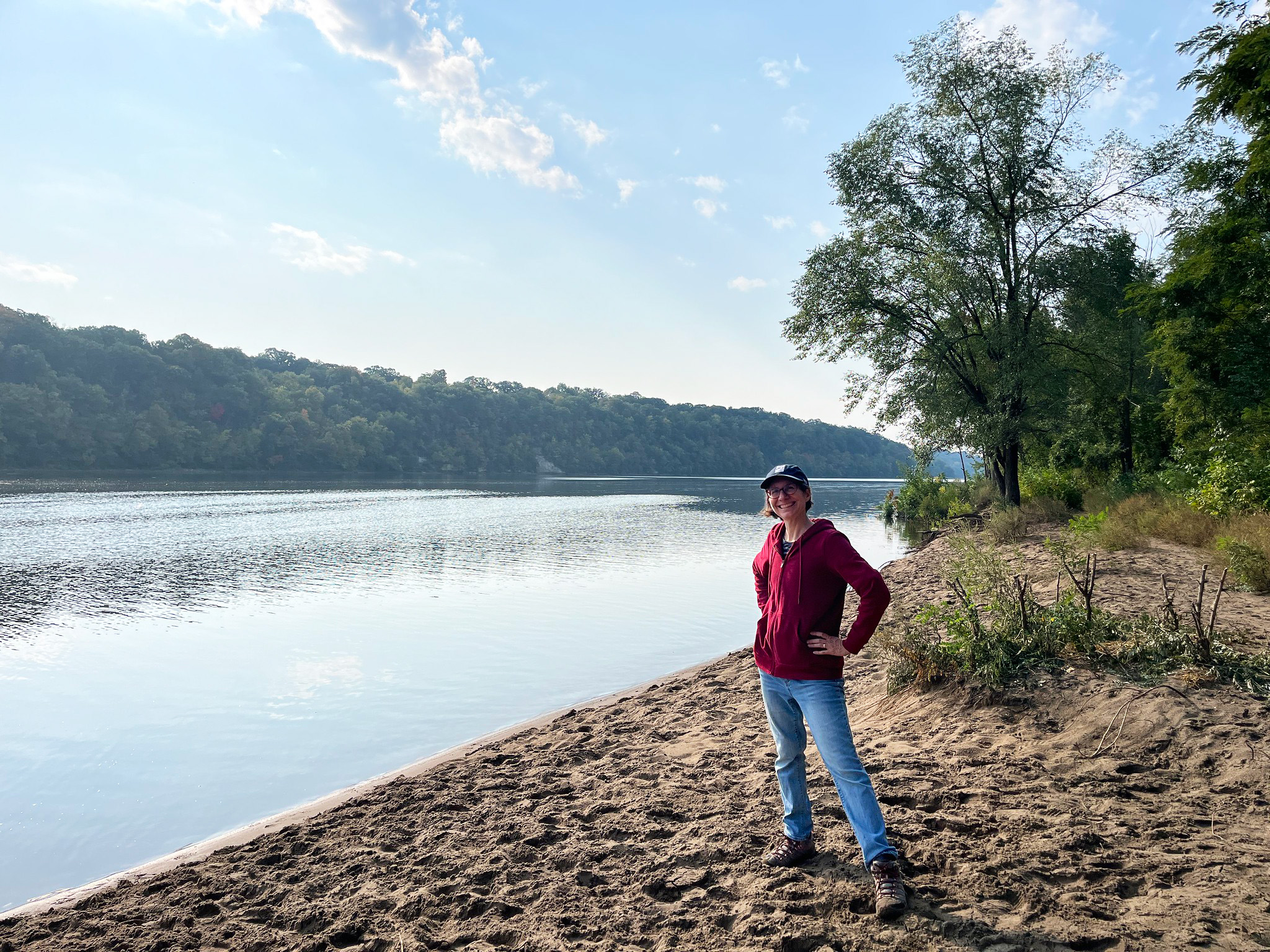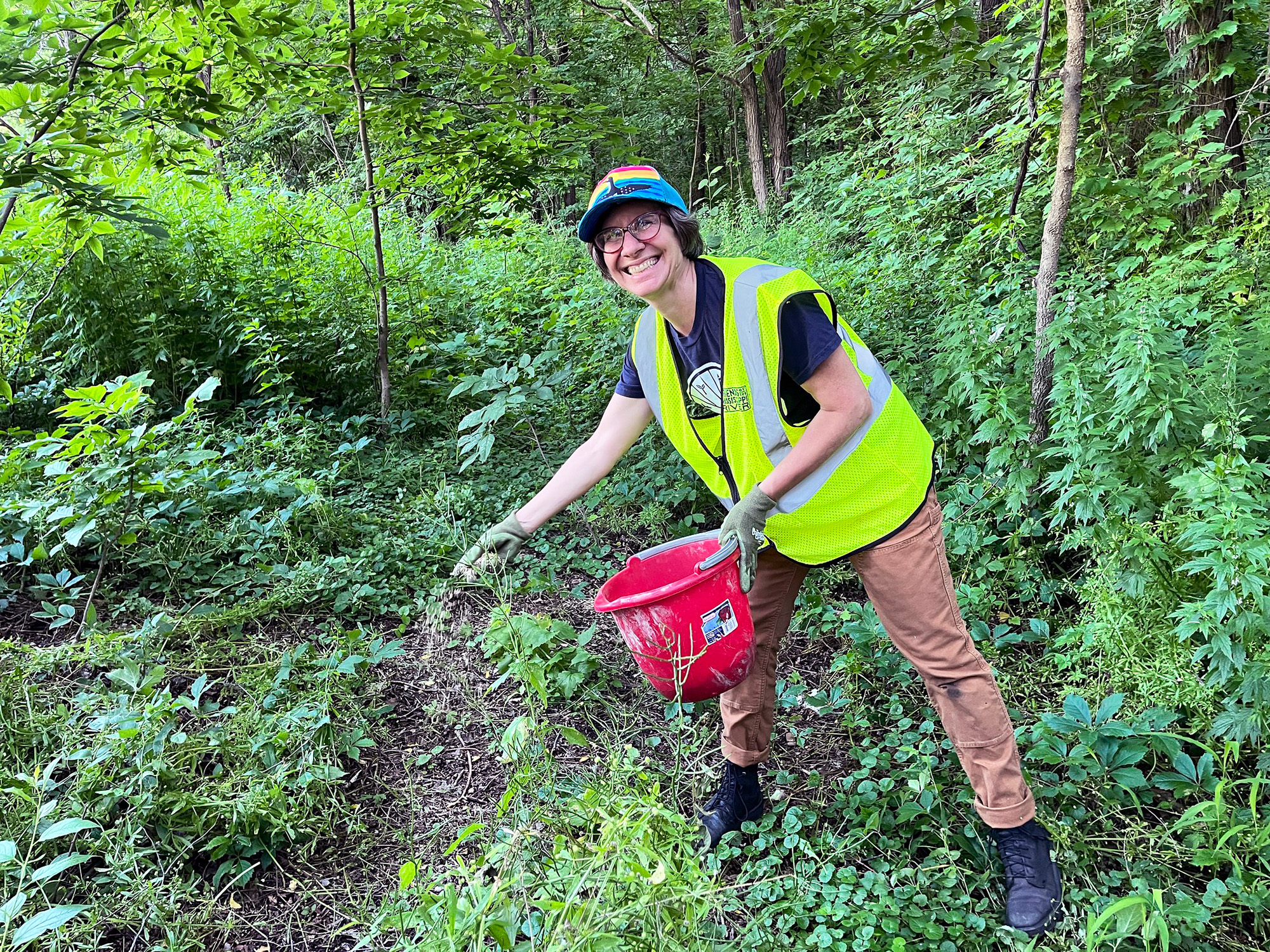'This can be home': Carrie's river story

Carrie Pomeroy volunteered with her children at FMR events more than a decade before becoming our volunteer program manager.
While good science and policy are necessary to protect the river, so are connections with the water and each other. To celebrate the way our own experiences with the river have led us to the work we do today, we're publishing a series of stories from our staff.
We asked Volunteer Program Manager Carrie Pomeroy a few questions about her relationship with the river.
What memories do you have with the Mississippi River?
I first moved to the Twin Cities from a smaller town in Arkansas. At times, I missed living in a more rural environment. But one afternoon in late spring, I discovered the river gorge hiking trails near the intersection of East Mississippi River Boulevard and Summit Avenue in St. Paul. Walking those trails overlooking the river, I remember being able to breathe deeply and exhale in a way I hadn’t in a long time and thinking, "OK, I can live here. This can be home."
Can you tell us about an important experience you've had with the river?
When I was getting ready to give birth for the first time a few years later, my midwife encouraged me to pick a peaceful place to visualize while I was in labor. The first place that came to mind was the tall, winding stone staircase leading down to Longfellow Beach in the Minneapolis river gorge.
There’s something so awe-inspiring about standing at the top of those stairs, looking down at a floodplain forest of cottonwoods, maple and oaks, then descending into such an unexpectedly wild place in the heart of the city. I practiced visualizing that place many times.
The day I started to have mild contractions with my son, who’s now 22, I didn’t feel up to tackling those stairs, but I did take a walk by the river. Being by the water and the trees felt profoundly reassuring as I breathed my way through early labor pains and told my baby I couldn’t wait to meet them.
As my son and later my daughter grew, I took them to the river regularly — to play on the Sand Flats beach near 33rd Street East and West Mississippi River Boulevard, to hike the Winchell Trail and listen for the songs of migratory warblers and the drumbeat of a pileated woodpecker’s bill on a hollow tree. I brought them with me to FMR volunteer events to help me pull garlic mustard in Crosby Farm Park and get their hands dirty planting native plants near the river in the Highland Park neighborhood.
It has pleased me to notice that when my daughter, now 18, needs to de-stress, she often gravitates toward bodies of water. It also excites me that she’s planning to study forestry and natural resources management at the U of M this fall.
"It’s so wonderful to walk down those stone steps — the steps I visualized while I was giving birth to my son — with a group of volunteers and work with them to bring renewal and restoration to a place that has meant so much to me and my family."
How do you connect with the river now?
When I’m not working along the river, one of my favorite activities is to hike along the Winchell Trail and try to identify bird songs with the Merlin app and plants with the iNaturalist app. I love being able to recognize and appreciate some of the many living things that call the gorge home and observe how they change through the seasons.
Since I joined the FMR staff in 2023, it has been so rewarding to work alongside my FMR colleagues and our wonderful volunteers to restore habitat in the gorge and beyond. Together with so many other people, I’ve helped pull many bags of garlic mustard in the gorge (and hauled them up those steep stone steps I love so much!), planted trees and herbaceous native plants, watered plantings, sown seeds and cut buckthorn. I’m learning more about this place that I love from FMR ecologists and Gorge Leadership Team leader Carolyn Carr.
What has the river given you?
The river has given me a sense of connection to the place where I’ve spent most of my adult life. I moved a lot as a child, living in six different states by the time I was 12, so it’s been wonderful to be able to live for decades now near the river and watch it through the seasons, year after year — to see the river frozen solid in a typical winter, then watch as the ice melts and the leaves come back in the spring. I love the way there’s just the faintest haze of green on the trees in the gorge in early spring, and then suddenly the green just explodes into such lushness after only a few weeks.
What does your connection mean for your work at FMR?
Volunteering with my children at FMR events, I appreciated the joy of coming together with other community members to make a small but meaningful difference. Alone, no one of us can make much of a dent on removing garlic mustard in a floodplain forest that’s become completely overrun. But when a dozen of us get together, we can see a measurable, tangible difference, and the work seems to go so much faster when you can chat and share the experience with other members of your community.
When I saw a job opening at FMR to help with volunteer events last year, I couldn’t resist the chance to help other folks have the kinds of experiences I’d found so rewarding. It’s so wonderful to walk down those stone steps — the steps I visualized while I was giving birth to my son — with a group of volunteers and work with them to bring renewal and restoration to a place that has meant so much to me and my family.
What do you hope for the river?
I hope that the river in the Twin Cities can continue to be a place where we can all feel a sense of home, renewal and connection to each other and the natural world.

Carrie spreads native seeds near gorge sand flats by the stone steps that mean so much to her.
Look for more stories in our enewsletter, Mississippi Messages. And if you join us at a volunteer event or another FMR gathering, we'd love to hear yours.